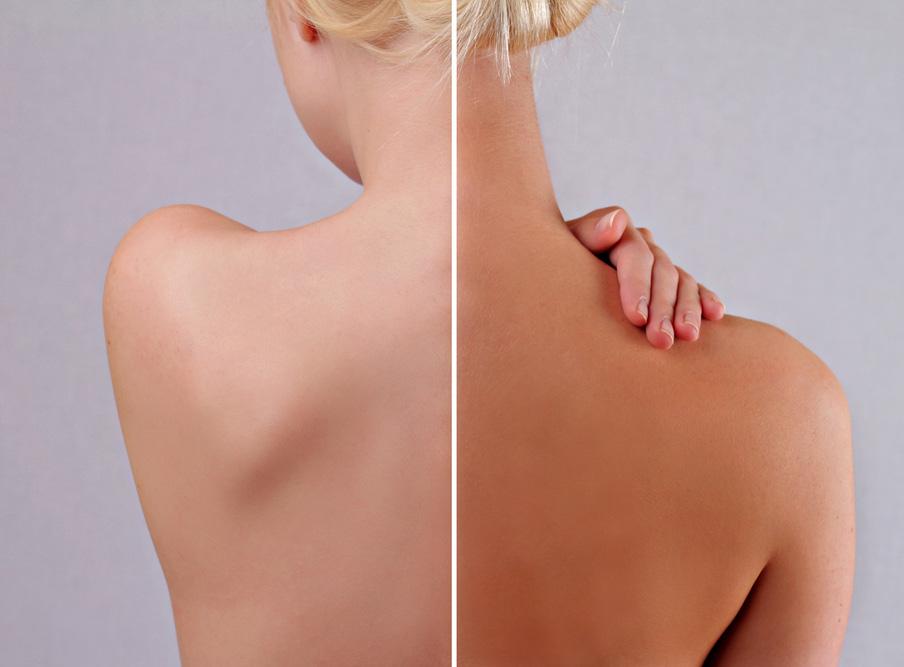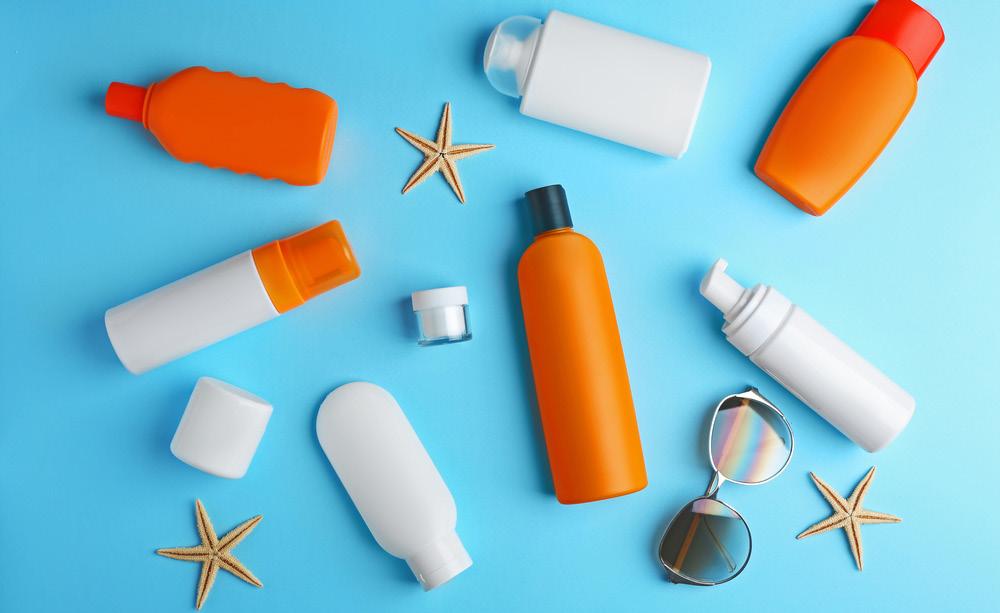
4 minute read
Tanning acceleratorscan they help protect the skin from harmful UV radiation?
With the daily application of the biological accelerator, the skin becomes tanned even in the season with a low level of sunlight, which enables its natural protection.
The literature on the effects of the sun on the human body can be summarized in a few key messages. So, for example, it is clear that without sunlight there is no natural process of creating vitamin D. The sun also affects the regulation of blood pressure, cholesterol levels, and mental health in general. So, it is important for human health. Unfortunately, excessive exposure to the sun and the longterm trend of tanning have resulted in premature aging of the skin and an increase in the number of melanomas in the population. Such a situation required a change of attitude. The media does everything it can to portray sun exposure as harmful and at least instill a fear of the sun. However, even in this case, the rule "the dose makes the poison" applies.
Advertisement
Today, products with SPF factors are common not only when sunbathing, but are recommended throughout the whole year. But this means that the higher the SPF in sun protection products, the longer it needs to be exposed to activate the natural protection mechanism. The same applies to biological processes, which are then also delayed. So, for example, in order to stimulate the formation of melanin, instead of 10 minutes of exposure to the sun without a product with a protective factor, with the use of a product with SPF 30, it is necessary to be exposed for 300 minutes (6 hours) to stimulate this process.
It also remains unresolved to what extent products applied to the skin of the whole body to achieve protection of SPF 30 will affect the health of the skin, or even have a wider reach of action on the whole body and organism.
The yellowbrown to brownblack pigment melanin is produced in melanocytes through a biochemical reaction, starting with the amino acid tyrosine, which occurs naturally in proteins and oxidizes with the enzyme tyrosinase under the influence of light and oxygen. The later biochemical reactions that make up the melanin production pathway and the formation of melanoproteins mostly take place independently. The pigment formed in the melanocytes is then released into the epidermal cells and migrates with them to the surface of the skin. Thus, the skin becomes pigmented, and the skin is protected from further effects of solar radiation.
There are two types of pigmentation: direct and indirect.
Direct pigmentation occurs mainly under the action of UVA rays, but also by radiation of longer wavelengths and heat. In this process, colorless pigment precursors already present in the skin are converted into melanin. This pigmentation can appear within minutes of exposure to light. It gives the skin only a transient, relatively weak tan.
Indirect pigmentation takes place under the influence of UVB rays. They stimulate melanocytes for increased melanin synthesis. Thus, melanin is created in the cells and migrates with them through the entire layer of the epidermis to the surface of the skin. It develops over a few days and lasts from a few weeks to a few months. Given that pigmented skin has relatively weak inherent protection, it is exposed to the risk of sunburn in response to solar radiation. The desire behind every sunbathing is to achieve optimal tanning with minimal damage to the skin, after the shortest possible exposure to sunlight. That's why the main function of a cosmetic product for sun protection with UV protection is to protect the skin from burns caused by the sun, while at the same time ensuring that the skin is tanned as much as possible. The degree of protection, however, is inversely propor tional to the darkening achieved, i.e., the higher the protection, the weaker and slower the darkening.
The use of skin tanning accelerators is particularly indicated to support the skin's natural protection, as more and more products with high SPFs are used. Using high SPFs works against the skin's natural protection mechanisms. The sun's rays are blocked and the mechanism cannot be formed, i.e., the natural protection mechanism is blocked.
In the case when a natural skin tanner is used, depending on the skin type, products with a lower SPF can consequently be used. This is the advantage brought by the daily application of tanning accelerators.
Tanning accelerators for skin care can provide certain benefits if used properly and in combination with appropriate sun protection measures. Some of the potential positives include:

1. Faster skin tanning accelerators stimulate melanin production, which can result in faster skin tanning with less exposure to the sun or artificial UV radiation.
2. Even Tanning Products with skincare accelerators usually contain moisturizing ingredients that allow for a more even tan. These ingredients soften and hydrate the skin, reducing the possibility of dryness, peeling, and uneven appearance.
3. More intense color skin care accelerators can help achieve a deeper and more intense skin tan. Improved melanin production can result in a darker and longerlasting color.
4. Skin care many accelerators contain an ingredient that nourishes and hydrate the skin, such as aloe vera, jojoba oil, or vitamin E which can help preserve the health and elasticity of the skin.
We can conclude that there is certainly great potential and scientific basis for using products with accelerators, but at least one month before exposure to the sun. With the daily application of the biological accelerator, the skin becomes tanned even in the season with a low level of sunlight, which enables its natural protection.
Source:
Alsins, J. et al. Acta DermatoVenerologica (Stockholm)
Donje Svetice 10, 10000 Zagreb, Croatia
M: +385 91 315 3803
T: +385 1 6535 182 info@livelypharm.com www.livelypharm.com









